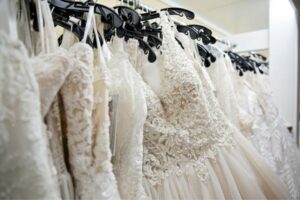Tuxedo vs Suit: What’s the Difference and When to Wear Each?
When it comes to dressing up for formal events, the age-old debate of “tuxedo vs suit” often arises. Understanding the differences between these two classic wardrobe staples is crucial for making the right choice. Whether you’re preparing for a wedding, a gala, or a job interview, knowing when to wear a tuxedo and when to opt for a suit can make all the difference in your overall appearance and confidence.
The Classic Debate
The debate between a tuxedo and a suit isn’t just about semantics; it’s about style, tradition, and occasion. While both garments have their roots in menswear history, they serve different purposes and convey distinct messages. In this article, we’ll dive deep into the tuxedo vs suit discussion, exploring their origins, key differences, and how to decide which one is right for your next big event.
The Origins of the Tuxedo and the Suit
Understanding the history behind tuxedos and suits provides context for their modern-day uses.
The Tuxedo: The tuxedo, also known as a dinner jacket, has its origins in the late 19th century. It was introduced as a less formal alternative to the traditional tailcoat, which was the norm for evening wear at the time. The tuxedo was named after Tuxedo Park, a wealthy enclave in New York where it first gained popularity. Designed to be worn in the evening, the tuxedo became synonymous with black-tie events and high society gatherings.
The Suit: On the other hand, the suit has a broader and more versatile history. The modern suit evolved from the lounge suits of the 19th century, which were casual daywear for men. Over time, the suit became the standard for business attire and formal occasions during the day. Unlike the tuxedo, which is reserved for specific events, the suit is a more flexible garment that can be dressed up or down depending on the occasion.
Key Differences Between a Tuxedo and a Suit
While they may seem similar at first glance, several key differences set tuxedos and suits apart. Knowing these distinctions will help you make an informed decision.
1. Satin Details: The most noticeable difference between a tuxedo and a suit is the presence of satin. Tuxedos typically feature satin lapels, satin-covered buttons, and a satin stripe down the side of the trousers. Suits, in contrast, are usually made entirely of the same fabric, with no satin accents.
2. Shirt Style: When wearing a tuxedo, it’s customary to pair it with a formal dress shirt that often includes pleats, a wingtip collar, and sometimes studs instead of buttons. A suit, on the other hand, is worn with a standard dress shirt, which can have various collar styles and button configurations.
3. Bow Tie vs. Necktie: Tuxedos are traditionally worn with a bow tie, adding to their formal appearance. Suits are more versatile, allowing for either a necktie or a bow tie, depending on the occasion and personal preference.
4. Footwear: The footwear you choose can also differentiate a tuxedo from a suit. Patent leather shoes are the go-to choice for tuxedos, adding an extra touch of elegance. Suits, however, can be paired with a wider range of dress shoes, including oxfords, brogues, or loafers.
5. Occasions: Perhaps the most significant difference lies in the occasions for which each is worn. Tuxedos are reserved for formal evening events such as weddings, black-tie galas, and formal dinners. Suits, on the other hand, are suitable for a variety of occasions, including business meetings, daytime weddings, and less formal evening events.
When to Wear a Tuxedo
Knowing when to wear a tuxedo is essential for adhering to dress codes and ensuring you look your best. Here are some scenarios where a tuxedo is the appropriate choice:
1. Black-Tie Events: If the invitation specifies “black-tie,” a tuxedo is a must. This dress code is often reserved for evening events that require a high level of formality, such as charity balls, award ceremonies, and upscale weddings.
2. Weddings: If you’re the groom or part of the wedding party, a tuxedo might be required, especially if the wedding has a formal theme. Even as a guest, if the wedding is a black-tie affair, wearing a tuxedo is the way to go.
3. Formal Galas and Dinners: High-profile dinners and galas often come with a black-tie dress code, making a tuxedo the appropriate choice. These events are typically held in the evening and demand a sophisticated appearance.
4. New Year’s Eve Parties: For an extra touch of class during New Year’s Eve celebrations, a tuxedo is an excellent option, particularly for upscale parties.
When to Wear a Suit
Suits offer more versatility than tuxedos and can be worn in a wide range of settings. Here are some occasions where a suit is the better option:
1. Business Meetings and Interviews: A well-tailored suit is a staple for professional settings. Whether you’re attending a meeting, giving a presentation, or interviewing for a job, a suit conveys competence and professionalism.
2. Daytime Weddings: For weddings held during the day or those with a less formal dress code, a suit is an appropriate and stylish choice. You can opt for lighter colors or patterns depending on the season and venue.
3. Casual and Semi-Formal Events: Suits can be dressed down for events that don’t require formal attire. Pairing a suit with a casual shirt or leaving out the tie can create a polished yet relaxed look.
4. Funerals and Religious Ceremonies: A dark suit is the traditional choice for funerals and other solemn occasions. It shows respect and adheres to the expected dress code.
Tuxedo vs Suit: Which One Is Right for You?
Deciding between a tuxedo and a suit ultimately depends on the event, your personal style, and how much you want to invest in your wardrobe. Here are some factors to consider:
1. Frequency of Use: If you attend a lot of formal events, investing in a tuxedo might be worthwhile. However, if formal occasions are rare for you, a suit offers more versatility and can be worn in a variety of settings.
2. Personal Style: Your style plays a significant role in your choice. Tuxedos exude sophistication and class, making them perfect for those who enjoy dressing up. Suits, with their flexibility, can be styled to match both conservative and more fashion-forward tastes.
3. Budget: Tuxedos are generally more expensive than suits due to their formal nature and materials. If you’re on a budget, a high-quality suit might be a more cost-effective option, especially since it can be worn more frequently.
4. Dress Code: Always consider the dress code of the event you’re attending. If the invitation specifies black-tie or formal attire, a tuxedo is necessary. For business or casual events, a suit will suffice.
FAQs About Tuxedos and Suits
Q: Can I wear a suit to a black-tie event? A: While it’s possible, it’s not recommended. Black-tie events traditionally require a tuxedo. Wearing a suit may make you appear underdressed compared to others in attendance.
Q: What’s the difference between a tuxedo and a dinner suit? A: The terms are often used interchangeably. However, a dinner suit typically refers to the British term for what Americans call a tuxedo.
Q: Can I wear a tuxedo during the day? A: Tuxedos are generally reserved for evening wear. Wearing one during the day may look out of place unless the event specifically calls for it.
Q: Is it acceptable to wear a colored tuxedo? A: Yes, but with caution. While traditional tuxedos are black, navy, or white, colored tuxedos can make a statement at the right event. Ensure the color choice aligns with the formality of the occasion.
Q: Should I rent or buy a tuxedo? A: If you attend multiple formal events annually, buying a tuxedo is a good investment. If formal events are rare for you, renting might be the more economical choice.
Conclusion: Making the Right Choice
In the tuxedo vs suit debate, the choice comes down to the occasion, your style, and your wardrobe needs. Tuxedos are the pinnacle of formalwear, perfect for those special evening events that demand elegance and sophistication. Suits, on the other hand, offer versatility and can be adapted to suit almost any occasion, from business meetings to weddings.
By understanding the differences between a tuxedo and a suit, you’ll be well-prepared to make the right choice for your next event. Whether you’re stepping out in a classic tuxedo or a sharp suit, you’ll look the part and feel confident in your attire.
Authoritative Links
- https://www.gq.com/story/tuxedo-vs-suit
- https://www.blacklapel.com/blog/tuxedo-vs-suit
- https://www.menswearhouse.com/tuxedo-vs-suit
This article is designed to be informative, engaging, and useful for anyone facing the tuxedo vs suit dilemma. With the right knowledge, you’ll never second-guess your choice again.



